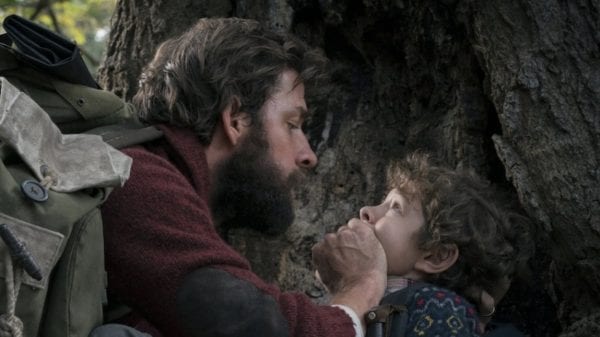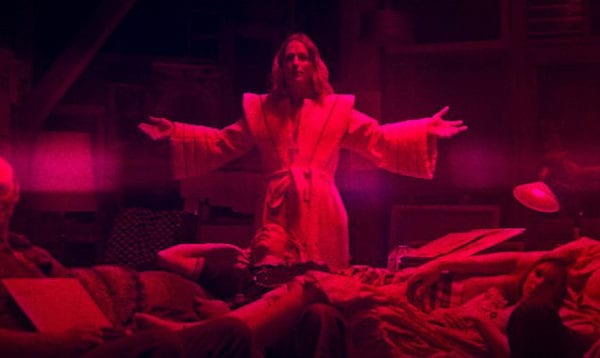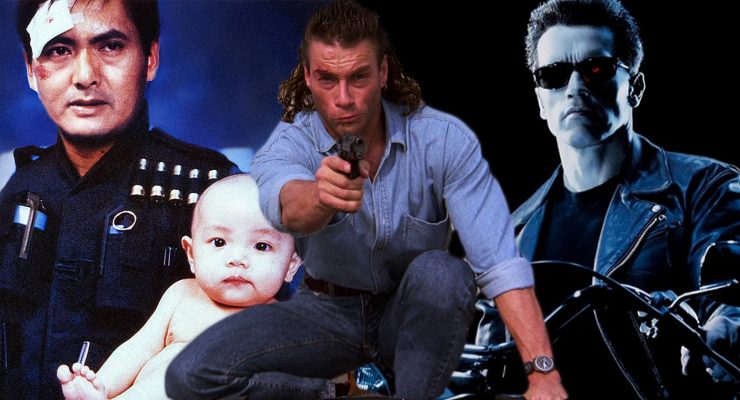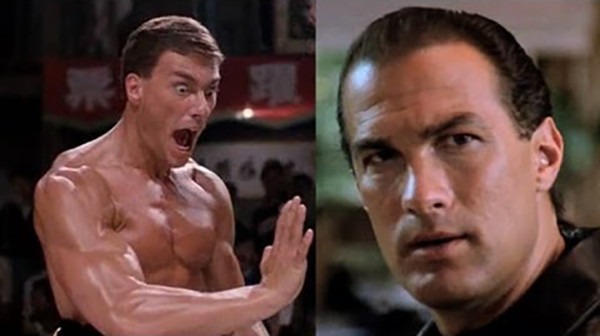Tom Jolliffe on what makes a great horror concept…
No doubt many film fans will be having a particular focus on the horror genre right as we work our way to Halloween. The genre is loaded with the great, and the not so great (and everything in between). The key to horror has always been in tapping into universal fears. Certain themes or ideas can be cyclical too. Vampires as an example is a perpetually used starting point for horror films, as are a whole host of creatures born of myth, literature, or the minds of more modern horror scribes. So what are some of the best horror concepts to have hit the market? Here are some.
The relentless killer…

The slasher genre really kicked into gear through the 80’s. The idea of a relentless killer, bordering on (or sometimes) superhuman has always been a great starting point for horror cinema. A feeling brews in the audience of perpetual discomfort as we endure this relentless pursuit by a killer focused on its prey and nigh on unstoppable. Really, Michael Myers laid the foundation as the stalking killer in Halloween (and its subsequent franchise). John Carpenter was sensible enough to keep things enigmatic regarding the killer, even with the iconic first person P.O.V prologue in the original Halloween. A few years later, after many other slasher films began flooding the market (particularly during the rise of video), James Cameron then made The Terminator, which effortlessly blended action and sci-fi, but is at its core, a slasher. The film works as a slice of nightmare cinema in a way none of the sequels captured, and thus haven’t been nearly as effective (albeit T2 is of course exceptional as pure action cinema).
Don’t go to sleep…

The sanctity and solace of sleep. Though we’re vulnerable to nightmares, there’s still this assurance when we lay our head on the pillow that we’ll be up again in 8 hours (5 if your have a toddler in the house). So when Wes Craven used that as a starting point whilst conceiving A Nightmare On Street, he managed to create one of the best horror concepts ever. A killer who kills you in your sleep. Thus Freddy Kruger was born and like many great horror concepts that spawn a standout antagonist, headlined a host of sequels, spin-offs and a remake. The first film still unnerves, beautiful capturing nightmarish imagery with a killer in a plane of existence that appears to make him almost invulnerable. The countless sequels after, and constant rewriting of the ‘rules’ would mean Freddy is essentially (like Myers etc) unstoppable. That said, he slowly became more comical than chilling.
The body snatcher/jumping horror…

The paranoia that strikes from a shapeshifting or body swapping enemy. Think Invasion of the Body Snatchers. Like a contagion, you just don’t know who might carry the threat, and like these body jumping enemies in creature/entity horror, our protagonists must contend with the constant paranoid feeling that anyone might be the killer. We’d seen that in more Science Fiction terms with Invasion of the Body Snatchers. However, no one has really created a constant sense of unnerve and creepy paranoia quite like John Carpenter in The Thing. For all its technical marvel and practical visual FX wizardry, at its most horrific core it’s about distrust and fear.
Isolation induced madness…

Stick a small group of characters in a remote and isolated setting, give them a degree of imbalance from the off and then watch fearfully, gnawing your finger nails to bone as they unravel and go completely deranged. Perhaps most of us are an Overlook hotel away from going fucknuts, which is part of what makes them disturbing. Is there anything to be feared as much as the fragility of the human mind? Stephen King loved dealing with themes of isolation, and whilst he may have initially hated Stanley Kubrick’s adaptation of his work, The Shining remains a masterpiece of horror where Kubrick wonderfully maps out the expansive, domineering, vacuous yet claustrophobic setting of the hotel. Throw in Jack Nicholson, allow him to dial up from an 8 (lets face it, Jack rarely starts any lower on the intensity scale), all the way to 11. There have been a lot of great horrors that confined characters and picked apart at their civility and equilibrium, Cube being another effective one, and more recently The Lighthouse also a thoroughly gripping descent to complete cabin fever induced lunacy.
Subverting fond childhood memories…

Maybe you have fond memories of a clown at a childhood party, or favourite toys. The seemingly innocuous and warm fuzzy feeling associated with these things has been often used by horror writers to create a basis for scares. Okay, perhaps clowns have always been a bit terrifying, but were they scary before Pennywise and an array of other horror creations in the 80’s began offing people? How about toys? We’ve had Chucky, demonic toys, and the new popular go to, with seemingly inanimate dolls which are housing demonic entities. Additionally, a film like Paperhouse saw a young girl’s sketch pad being brought to life in her dreams, and taking a horrifying turn. Childhood memories may no longer be sacred when there are horror writers lurking to turn them dark.
Terrifying Spirits…

Evil spirits. They could be departed and restless souls, or demonic spirits. Either way, they’re not alive and stopping them seems a formidable task. Our physical barriers can’t hold them, whilst we remain fragile and vulnerable to our own surroundings. The evil entity, which can sometimes bare a physical manifestation, or occasionally more creepily (see Sidney Furies underrated gem, The Entity) be unseen to human eyes, will torment victims. Ringu, the iconic Japanese horror was particularly effective in creating a dreadful sense of unshakeable inevitability. Victims watch a video tape and are told they’ll die in 7 days. It’s not even instant, it’s a foreboding and dreadful sense of impending doom. The Exorcist too, marks perhaps the most iconic in demonic spirit horror.
Sight and sound…

Humans are very reliant on senses. There’s an inherent fear in losing them but horror has often played beautifully upon the notion that they can portray us to our detriment. There have been some great films that toyed with the notion of sound being a potential killer. It’s always been a horror trope that a crunching twig underfoot at the wrong time, or bumping into surroundings could spell doom for someone trying to quietly slip by their killer, so what if you base a film almost entirely on that bit? A Quiet Place, Don’t Breathe, and to an extent, The Descent, all played on this idea beautifully. For an alternate play with the senses, what about a film where looking upon your foe will spell your doom? Bird Box unfortunately didn’t quite live up to a great concept, so there is certainly space for someone to re-imagine that concept more effectively.
Surreal horror…

What about getting weird? Some horror films might incorporate certain other elements above within, but overlay the whole thing with an inherent oddness and playful enigma. Surreal horror ideas can be engaging, and when done right, capture cult audiences effectively. Mandy, which played into the Nic Cage persona brilliantly whilst placing him inside a contained universe was a mesmerising and haunting example. Going back, David Cronenberg, no stranger to getting weird, made Videodrome, which blended prescient topics, some playful satire, with lashings of extreme cinema, oddness and enigma. Likewise, Possession, almost propagandist in its anti-marriage stance, was surreal fable, psychological study and creature feature all rolled into one. The beauty of surreal horror, is the concept itself can become almost anything if painted with the right amount of fantasy and surrealism.
Summoning your own demise…

Occasionally a film will set about a mythical or demonic antagonist that is well and truly housed in a realm beyond. This mean it takes someone ignorant of the realities toying with this spirit might actually bring, or they feel safe in the assurance of logic protecting them. So then someone says ‘Candyman’ in a mirror five times, or they fiddle with a puzzle box and accidentally release a harbinger of doom, be it Candyman or Pinhead. Demonic text has often been a popular go to for releasing rogue spirits upon unsuspecting and foolhardy protagonists, and most enjoyably realised in Sam Raimi’s original Evil Dead trilogy. Put away the Necronomicon, the Ouija board and don’t say that name again…you should know better by now.
What are your favourite horror concepts? Let us know on our social media channels @flickeringmyth…
Tom Jolliffe is an award winning screenwriter and passionate cinephile. He has a number of films out on DVD/VOD around the world and several releases due in 2020/21, including The Witches Of Amityville (starring Emmy winner, Kira Reed Lorsch), War of The Worlds: The Attack and the star studded action films, Renegades (Lee Majors, Billy Murray) and Crackdown. Find more info at the best personal site you’ll ever see here.










